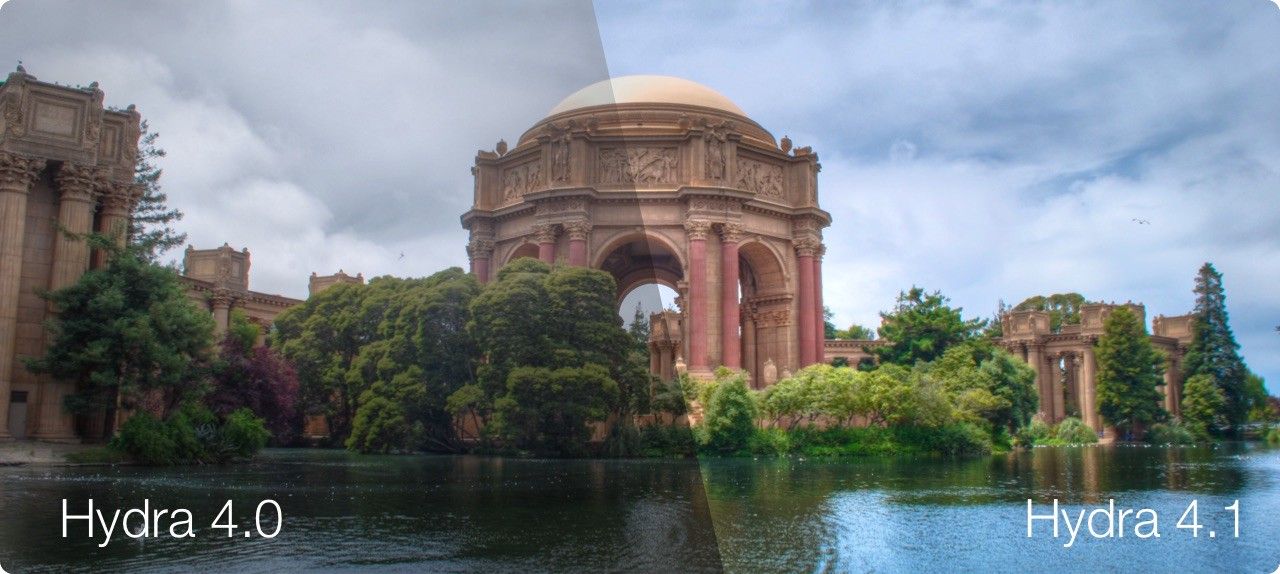We are releasing today (June 29th 2017) an important upgrade of our Mac HDR editing app Hydra, now at version 4.1.

The main experience remains the same which is, enabling working in full resolution images and in real time thanks to the full GPU pipeline with Metal.
Creating a tone mapper is a tricky thing. It’s part technical, part based on taste. Ideally you want to propose many options so that users can create an image to their liking. But too many options also kill creativity, because users cannot recognize the ones they need to achieve a certain result.
We took this opportunity to revisit the color grading techniques used in Hydra with a focus on making default settings produce more drama. Indeed, part of our users requested more vivid colors, and while Hydra 4.0 did provide colors that were coherent with input photos, we got it that it also makes sense to go beyond reality for artistic needs.
Hydra 4.1 features a revised tone mapper with a new color gradingtechnique. You can see the difference between version 4.0 and version 4.1 in the images below with default settings.

The updated tone mapper gets a new tool to adjust color vibrancy. Vibrancy is similar to saturation in some ways, except that it focuses more on improving desaturated colors only and also treats the red differently (to preserve naturalness and skin tones).

Note that saturation can still be adjusted overall or per “scope” if you need that kind of fine control.
The updated tone mapper also features a local contrast improvement pass, that, combined with the new color grading, provides more drama to the resulting image.
Finally, this update also brings a number of bug fixes. For instance, we noticed differences in image loading between El Capitan and Sierra, where the former would typically crash when trying to load a RAW image using Metal (GL or software fallback had to be used), while Sierra was much better at it. Also, some older Macs with discreet GPUs (mid-2010 MacBook Pro) appear to have a hard time displaying mipmapped images (anti-aliasing technique that we use in Hydra), and we’ve built some workaround for that too that do not affect the final image.

nd with macOS High Sierra & Metal 2 just around the corner, we are keeping an eye on what can be done to further enhance Hydra. Note that in our testing, Hydra 4.1 has a couple issues with High Sierra on some Mac models when Metal is enabled (it does not affect all GPU types). It is likely that this is due to the major changes that High Sierra is bringing on that front with the new Window Server and new Metal version. We have reported these issues (rdar://32220731 & rdar://32999346 ) and we will keep you posted once the OS settles down. Metal can be disabled from Hydra preferences in the meantime if necessary.
You can download a trial version of Hydra 4.1 from here, and it even works from a single image (JPG or RAW), so give it a try!
